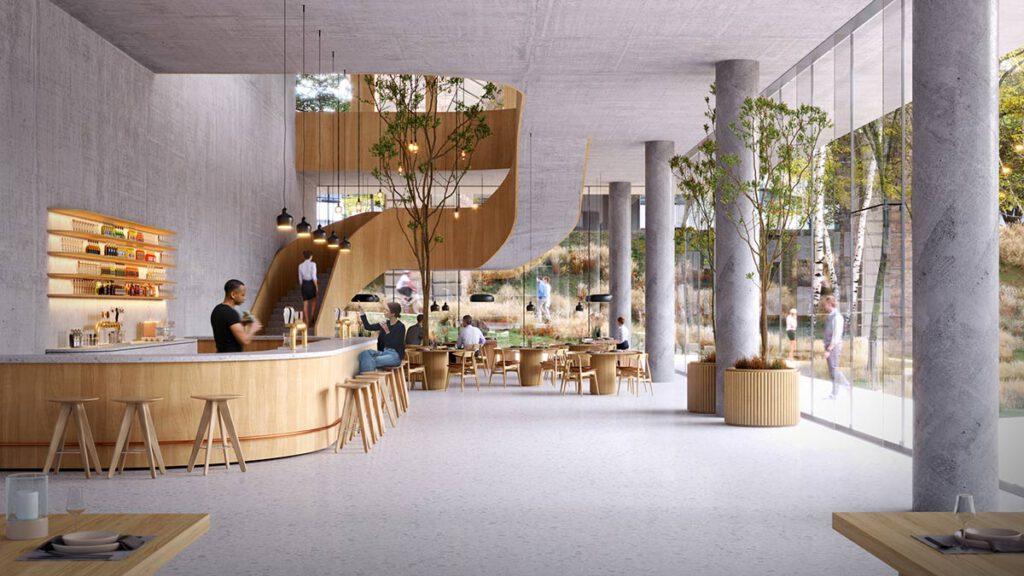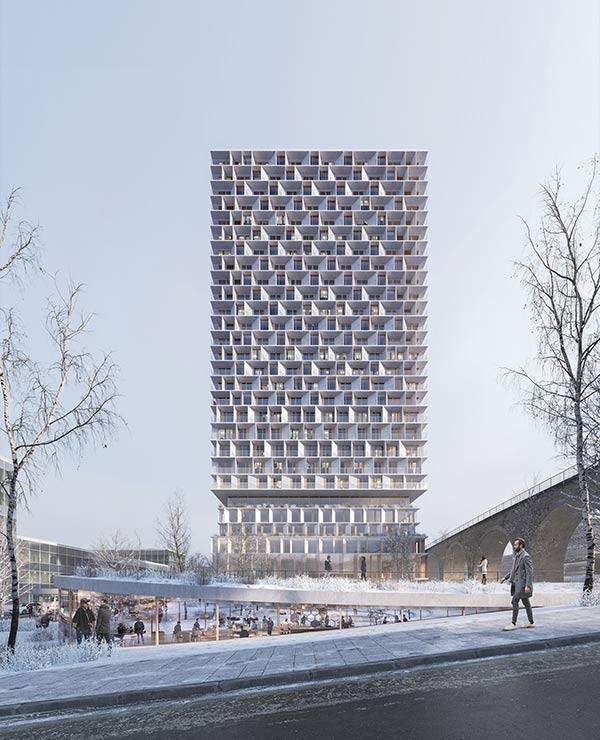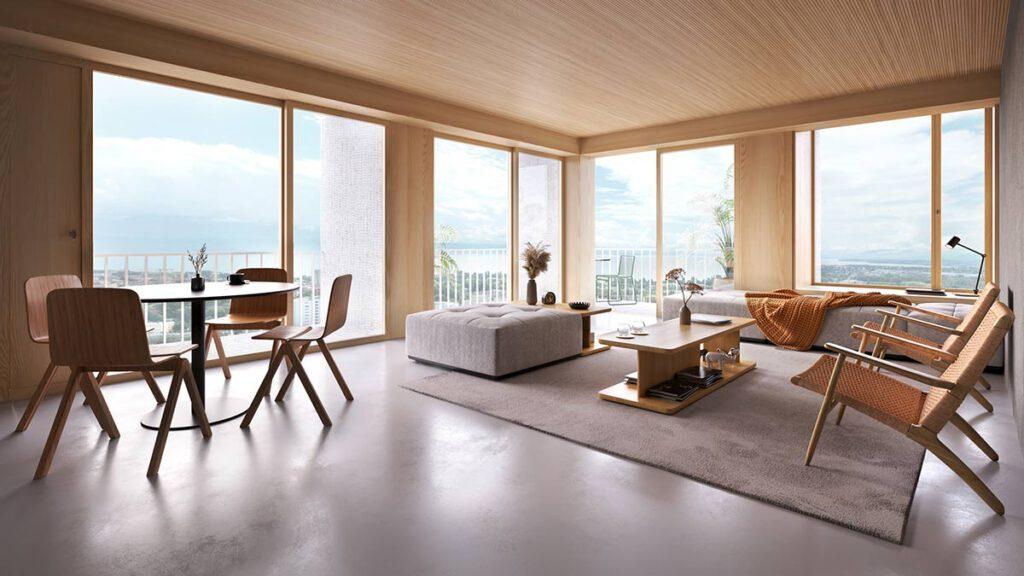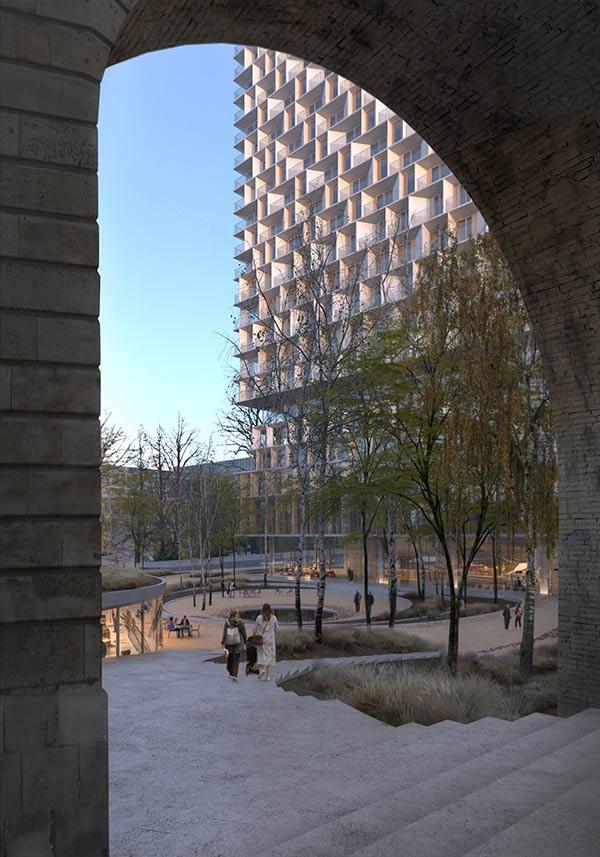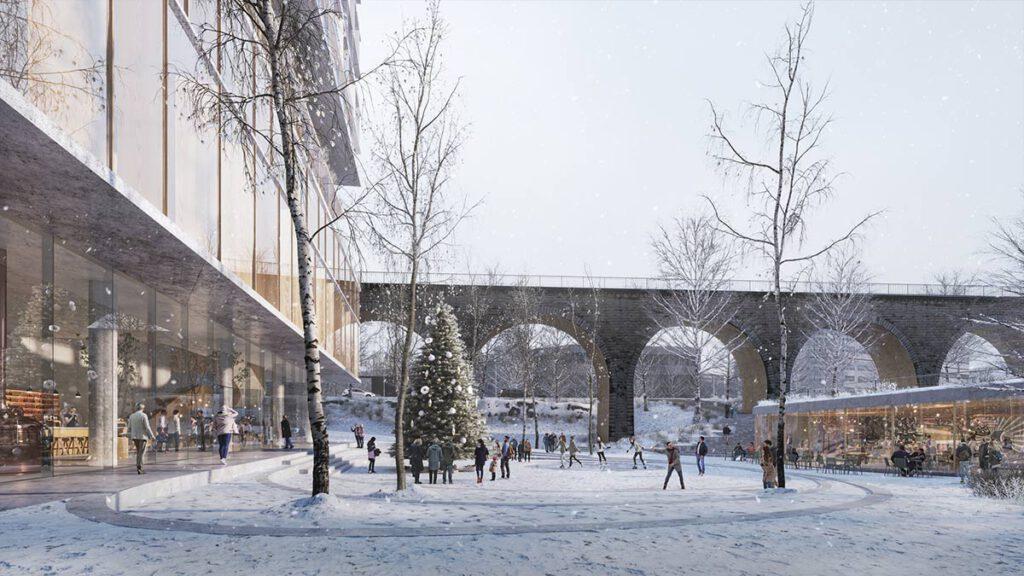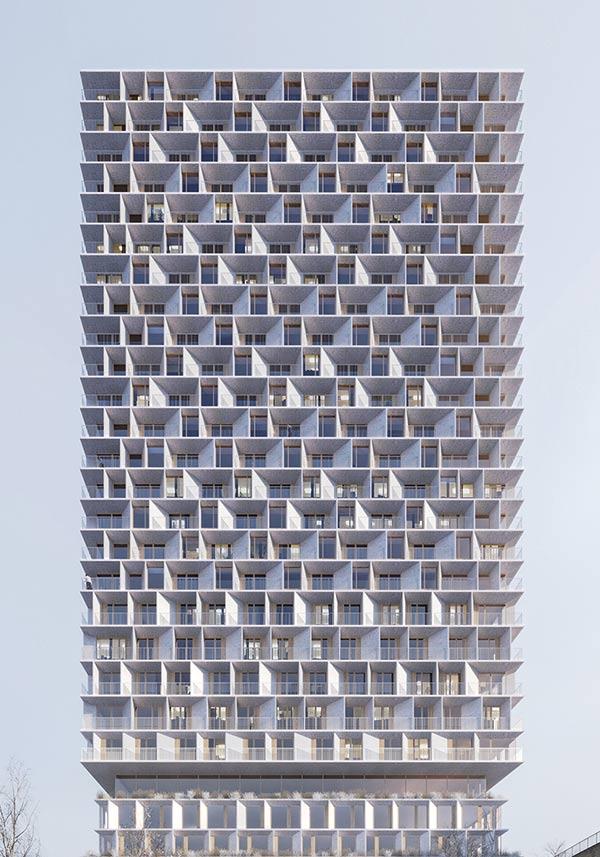Plyscraper on Lake Geneva
Swiss urban planning combines prominent architecture with ecological timber construction. Lausanne’s Tilia Tower is setting a high standard in future-proof urban development.
Warm, natural wood on walls and ceilings, unostentatious wooden furniture with Scandinavian design, and a spectacular view of Lake Geneva: the scene is reminiscent of a contemporary detached house, yet it is actually the rendering of a typical apartment in Lausanne’s new high-rise project. The Tilia Tower by Danish architectural office 3XN is a timber high-rise with a height of 85 m (279 ft) that re-explores the limits of eco constructions.
More than just height
Investors across Europe are constructing timber skyscrapers that stretch higher and higher towards the heavens. The tower planned for Lausanne is currently only just topped by the Mjøstårnet in Norway at a height of 85.4 m (280.18 ft), although this is only because of the scaffold structure on its roof. The city of Eindhoven in the Netherlands aims to become the next winner in the race for the world’s highest timber skyscraper. It is set to be dominated by a new landmark called The Dutch Mountains, a 130-m (426-ft) timber construction with two towers of different heights.
However, height is not the only discipline for measuring plyscrapers. Energy requirements, ecological construction, design and urban development also need to be included in the evaluation. This project in Lausanne, which is also transforming two existing structures, is successful in a number of areas.
New momentum in urban development
This new showcase project is being built in Prilly, an agglomeration district that interconnects with the central city of Lausanne. A former wine-growing region, by early 1900 it had already developed into the residential area for the neighbouring city. Industrial and commercial enterprises settled in the area, which gave Prilly its typical suburban character.
Nowadays, outflux and excess ageing have caused the population to shrink, and almost the entire area is covered with buildings. The region needs an injection of fresh, invigorating urban development. It is a task that the area around Tilia Tower is expected to fulfil.
Connecting old and new
The innovative timber high-rise is expected to breathe new life into the neighbourhood with its new public spaces and areas. An older office building and a badminton hall are also part of the project. They will be restored and their building technology will be updated to meet the latest standards and achieve Minergie-P certification for the entire project. Minergie P is a quality seal that is awarded in Switzerland to buildings with the lowest energy requirements.
The result is a complex building with an open and strong identity and an organic expression that breaks with the classic homogeneous box.
Jan Ammundsen, 3XN Architects
The exterior of the existing buildings will also be given a makeover to match the architectural hallmarks of the new construction. Their design is by Danish architects 3XN, who recently caused a stir with the spectacular Shenzhen Natural History Museum and the smart cube berlin. The Tilia Tower is a mixed-use project that will offer co-working and co-making spaces, bars, restaurants and cafés, besides apartments and a hotel.
Diversity of design
The versatility of the building’s future use is mirrored by its design concept. “Diversity is also a key driver in the building’s design and is reflected in the façade’s rhythmic expression,” explain 3XN Architects. “The apartments are structured as a series of individual elements that shift on top of each other in a rational arrangement.”
Diversity is also a key driver in the building’s design and is reflected in the façade’s rhythmic expression.
Jan Ammundsen, 3XN Architects
“The result is a complex building with an open and strong identity and an organic expression that breaks with the classic homogeneous box. The deep window niches and terraces reach out and create a connection between the building, its users and the outdoor space.”
Focusing on human needs
Creating an environment that is natural and healthy for human well-being was at the focus of the designers’ considerations. “We have worked with the philosophy of making a building that respects the human scale by emphasizing the connection to nature and by ensuring good daylight, which we know is important for human well-being. Wood is a consistent material in the project which adds a natural, warm, and robust look,” remarks 3XN architect Jan Ammundsen.
“Bright, friendly, humane and sustainable”: Ammundsen believes that the Tilia Tower will offer everything that is expected from a new modern building.
Text: Gertraud Gerst
Translation: Rosemary Bridger-Lippe
Images: 3XN
